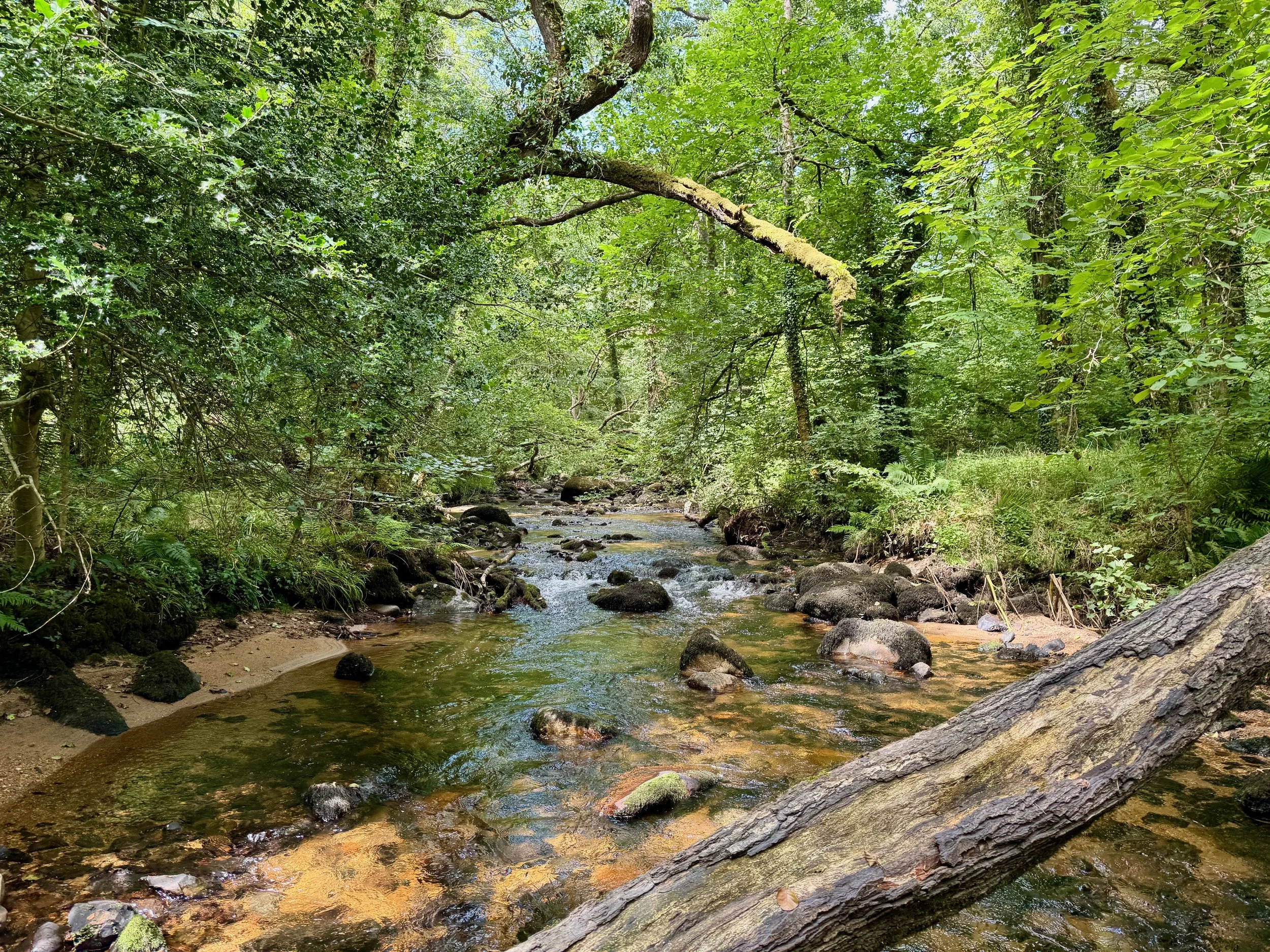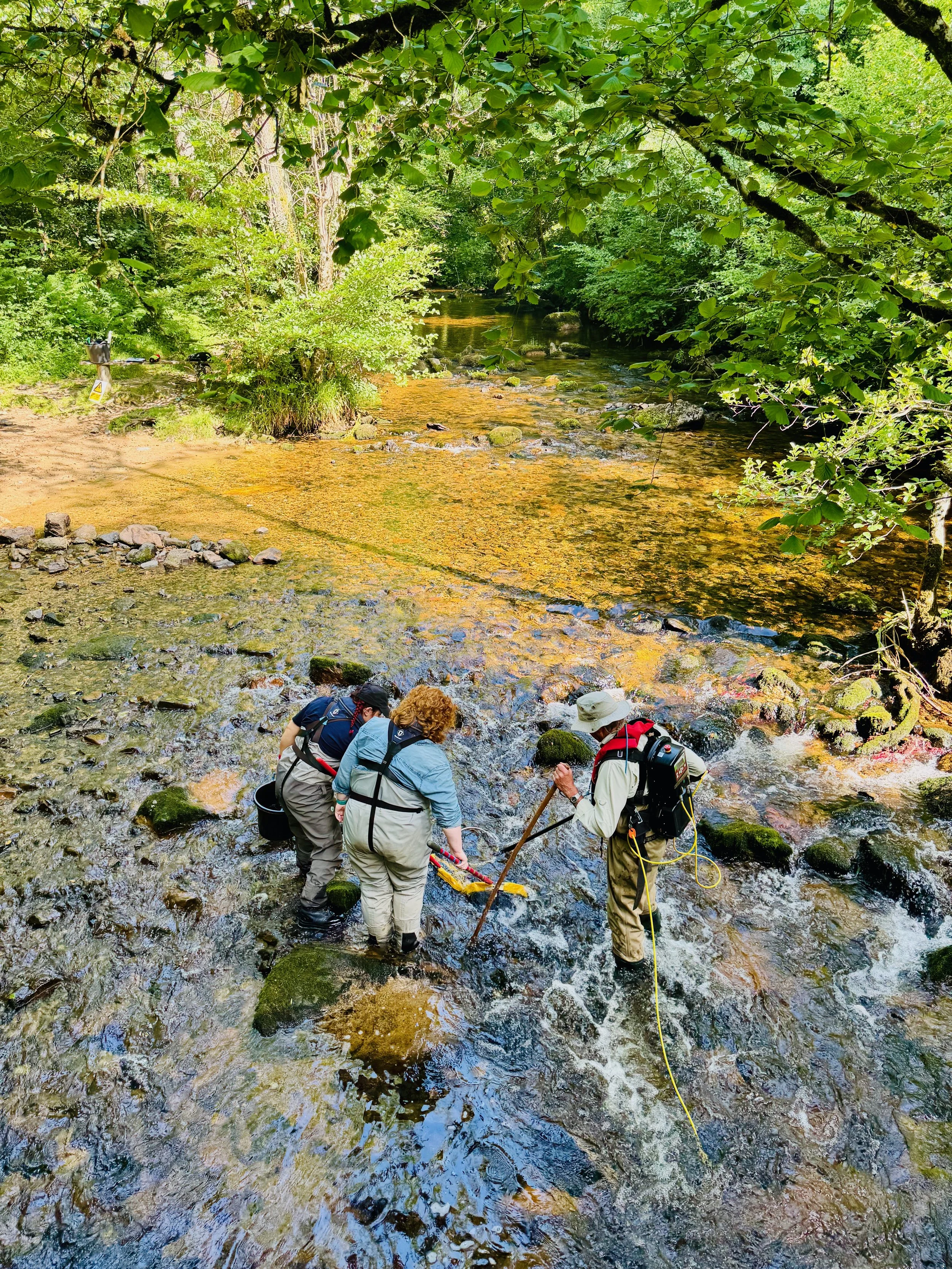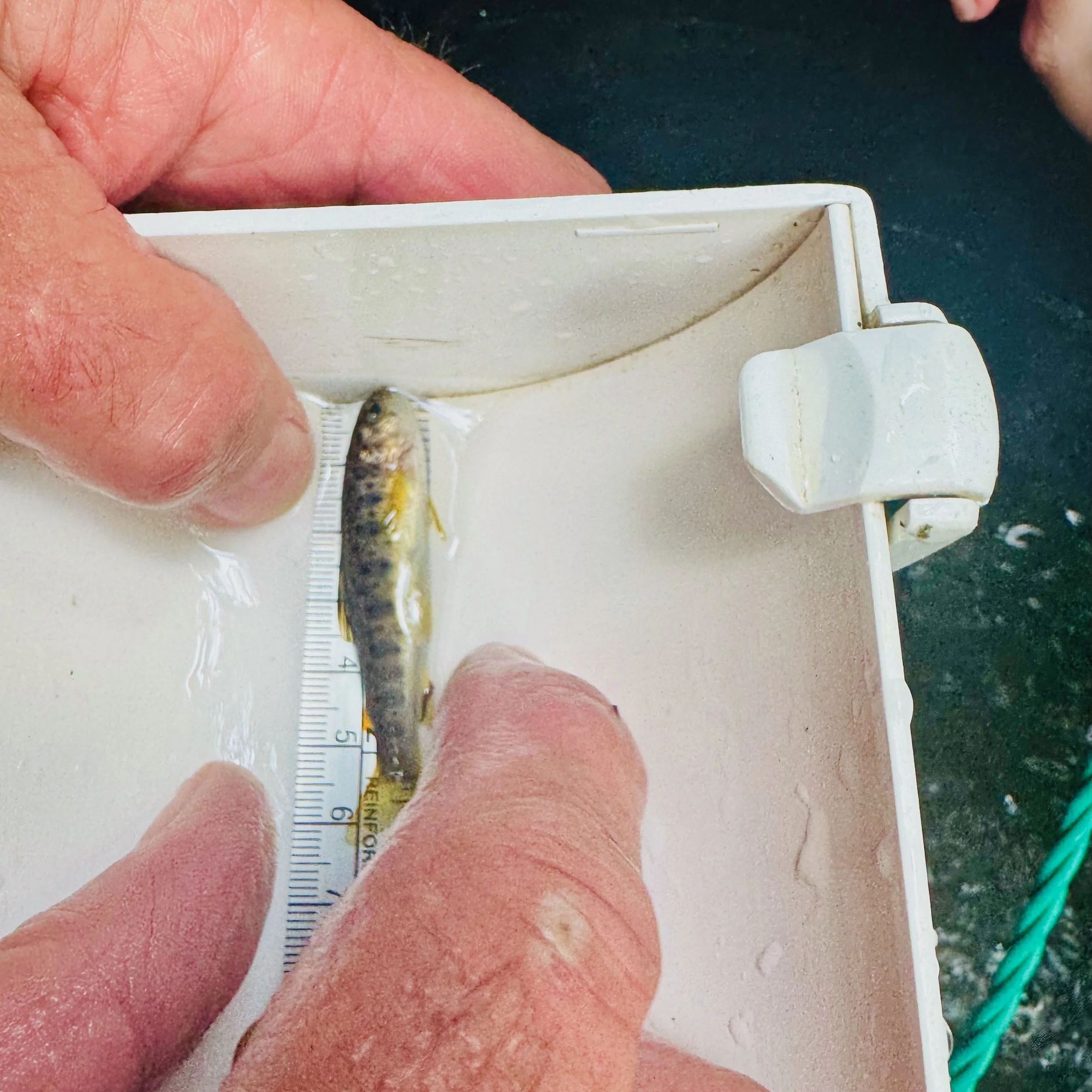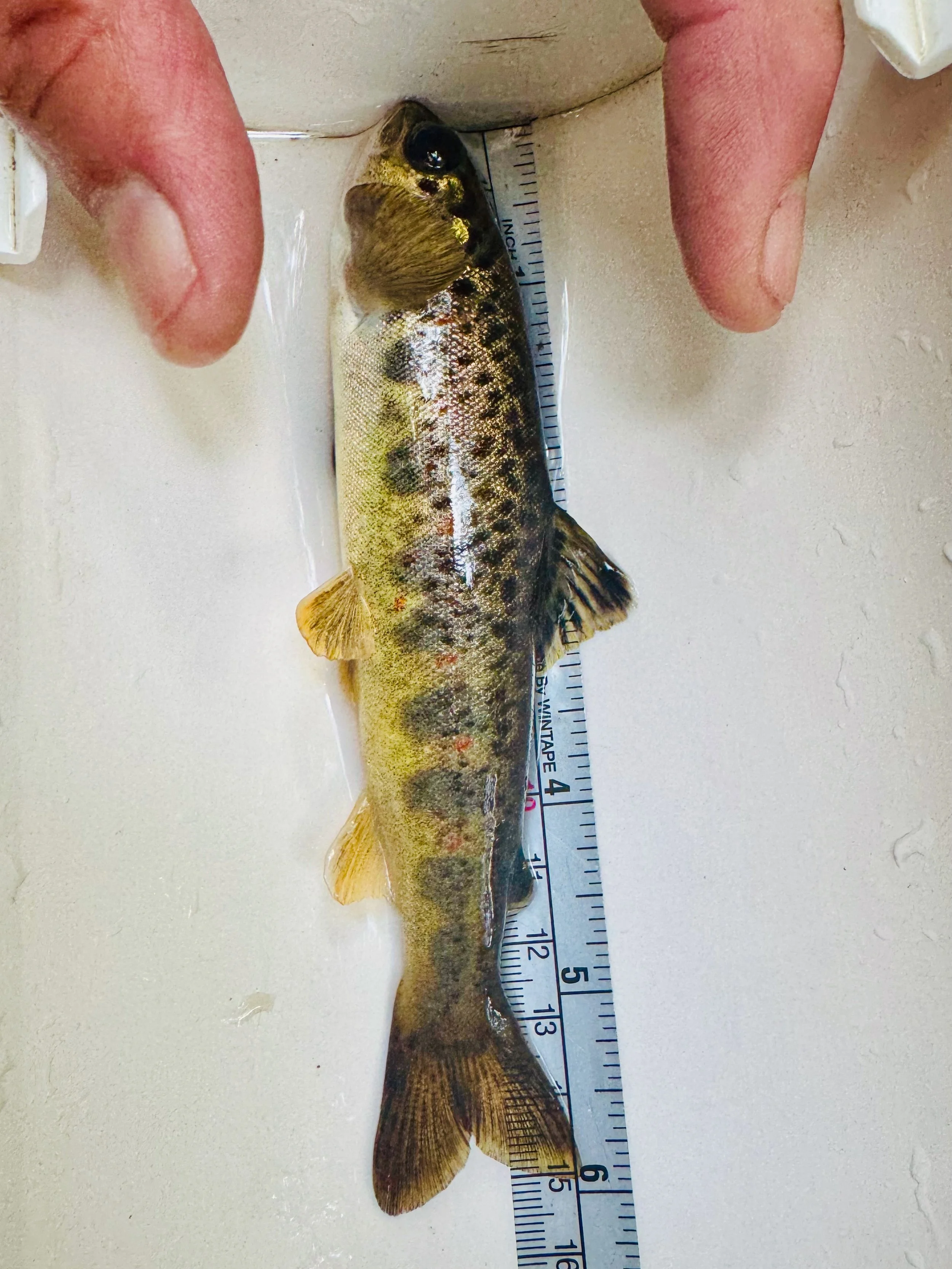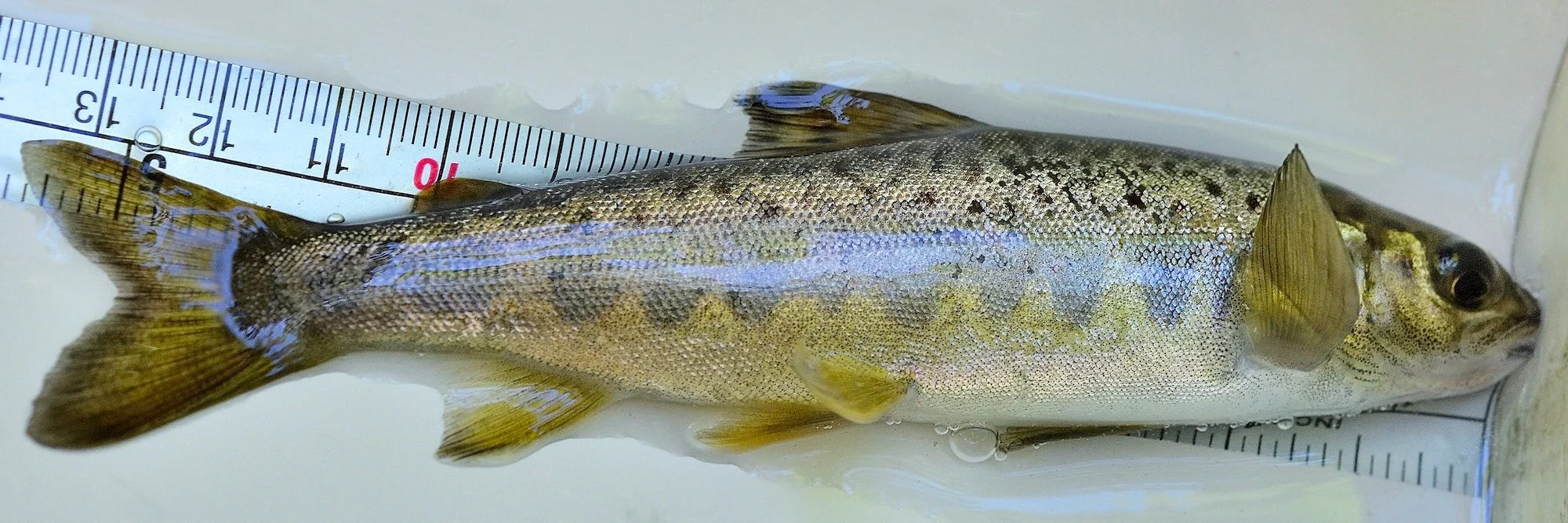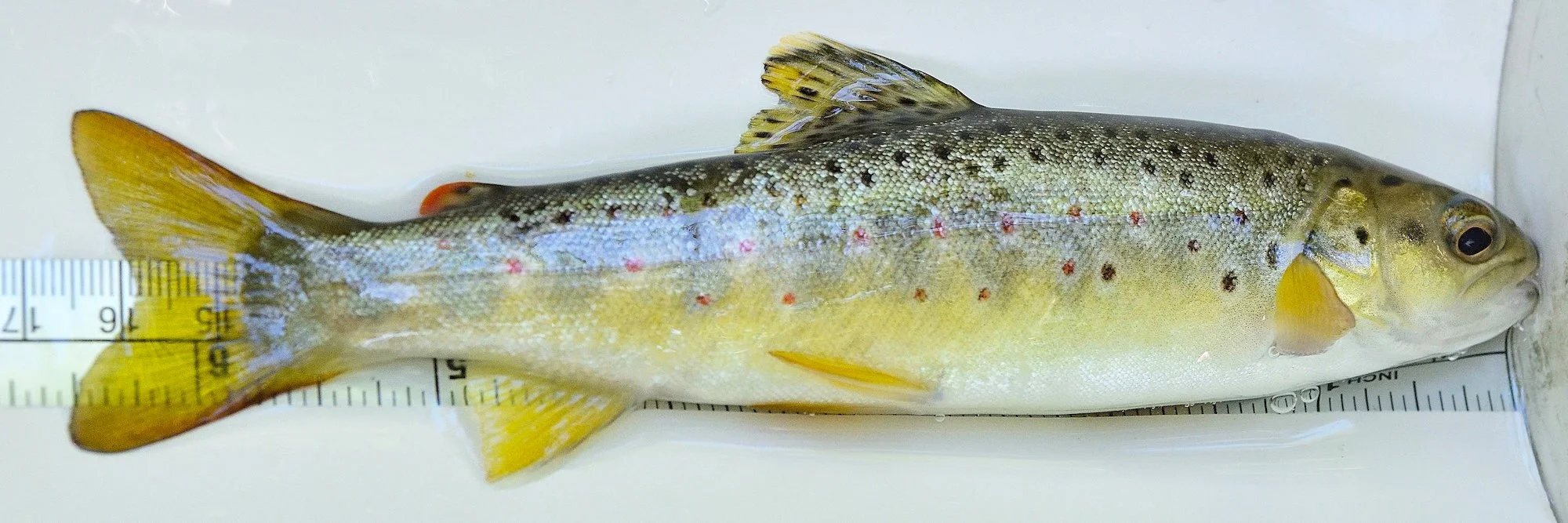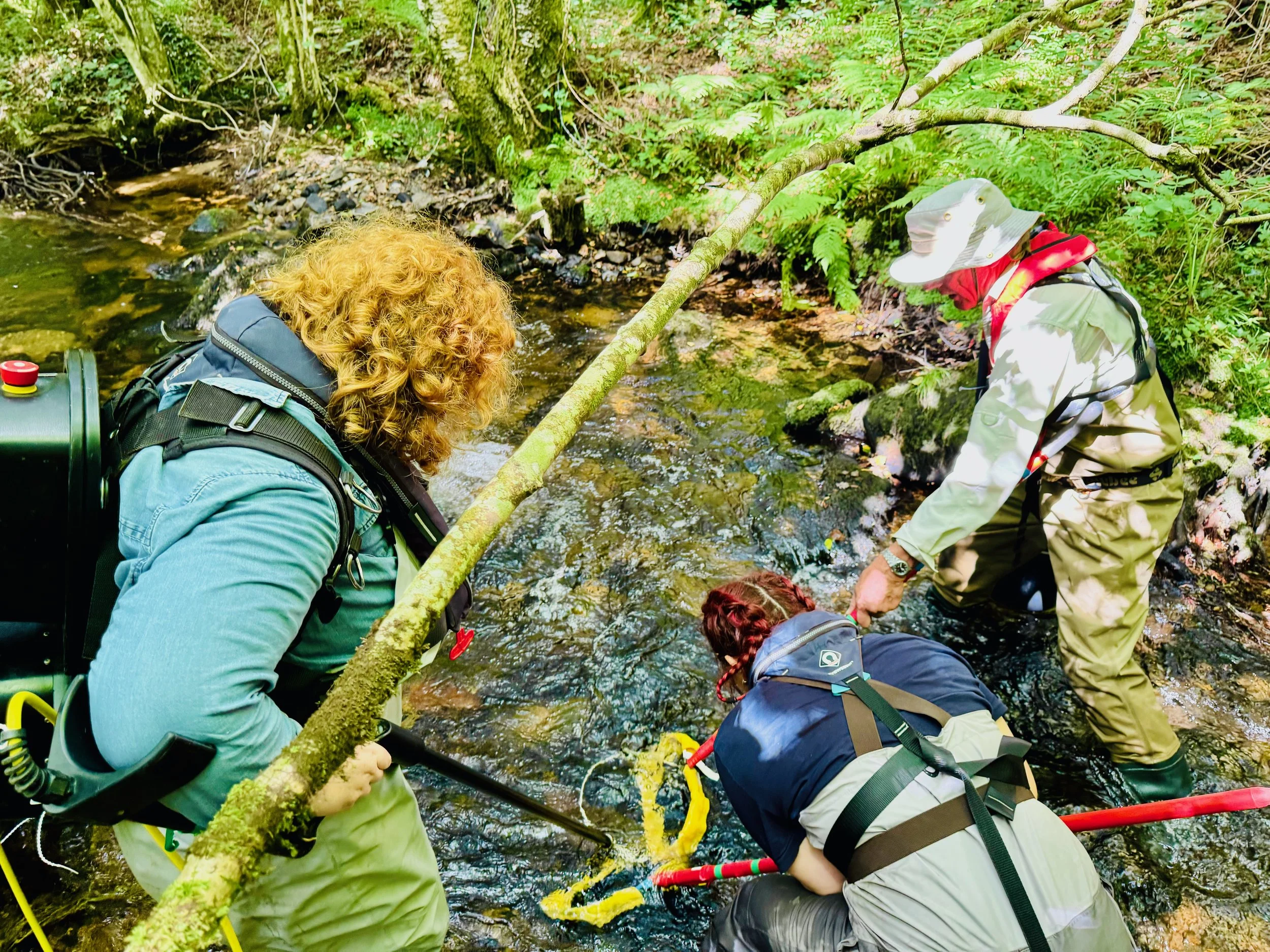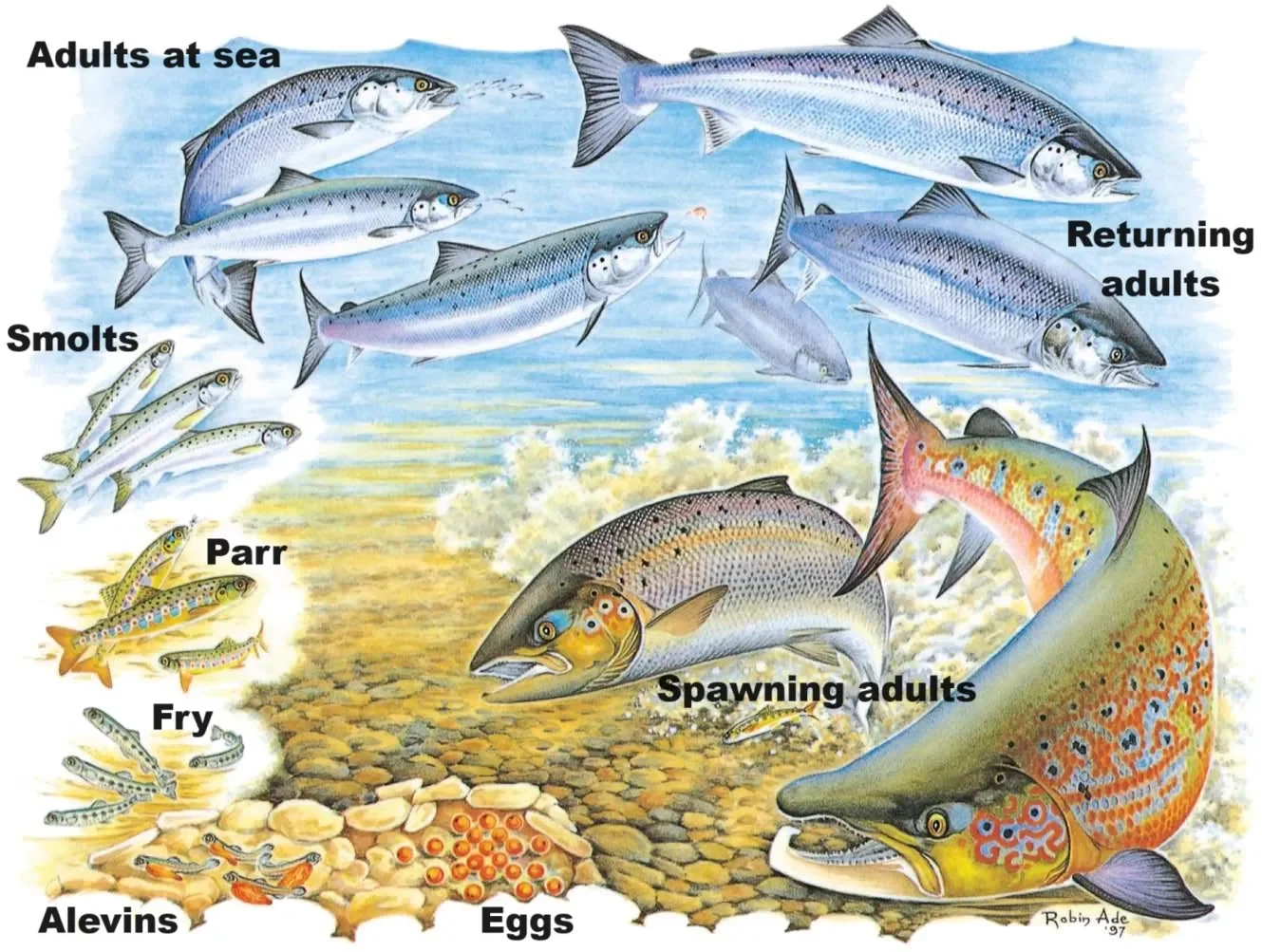Electrofishing on the Teign Catchment
Healthy rivers are the lifeblood of our countryside, supporting countless species of wildlife and shaping the landscapes we love. Among the most iconic inhabitants of the Teign Catchment are wild brown trout and of course, the Atlantic Salmon – species that act as powerful indicators of river health.
To ensure these fish continue to thrive, we work with our partners at the West Country Rivers Trust (WRT) to carry out electrofishing surveys across the Catchment. These surveys give us an invaluable snapshot of juvenile fish numbers, helping us understand how well our rivers are functioning and where conservation efforts should be focused.
What is Electrofishing and Why Do We Do It?
Electrofishing is a scientific survey method designed to capture fish safely and temporarily, allowing us to record their numbers, sizes, and species. A backpack unit sends a gentle electric current through the water, momentarily attracting and stunning fish so they can be netted with ease. Think of a moth being drawn to a light bulb - although there is no singed ending where our fish are concerned.
As we are specifically looking for fry (juvenile fish) the likely spots of the river are electro-fished - Riffles and well-oxygenated water with suitable habitat (light woody debris) for small fish to thrive and feel safe.
An example of the habitat electro-fished in the search of trout and salmon fry
Once caught, the fish are placed in buckets of oxygenated river water where they are counted, measured, and carefully released. This approach is essential for:
Monitoring fish populations (especially juvenile salmonids)
Assessing the success of spawning seasons over time
Informing future habitat restoration projects
A Small Trout Fry - Measured, recorded and returned to thrive
Putting Fish Welfare First
Fish welfare is at the heart of every survey carried out.
Timing is crucial: We never survey when water temperatures are near 18°C, as warm water can reduce oxygen levels and increase stress for the fish.
Oxygenated holding buckets: While being counted, the fish are kept in large buckets of river water equipped with battery-powered oxygenators, which maintain optimal water conditions and minimise fish stress.
Gentle handling: Trained staff handle fish minimally and return them to the river as quickly as possible.
These measures ensure the surveys have minimal impact, allowing us to collect data without harming the river’s precious inhabitants.
A Welcome Surprise on the River Bovey
During a recent survey in Houndtor Woods on the River Bovey, we made a thrilling discovery: a salmon parr (a juvenile salmon) was found in a section of the river where our previous studies had recorded no salmon presence.
The Illusive River Bovey Salmon Parr
This is a hugely encouraging sign that salmon, although not spawning in this particular location due to the lack of suitable spawning gravels, may be recolonising parts of the river where they were previously absent. It also highlights the importance of ongoing habitat improvements and monitoring – every piece of data we gather adds to the bigger picture of river recovery.
This is something that we were able to visualise in the River Teign Restoration Project by examining juvenile trout and salmon counts in the catchment, dating back to 1963 and seeing how they have altered over time.
How to Tell the Difference Between Juvenile Salmon & Trout
During electrofishing sessions, distinguishing between young salmon and trout is vital for accurate population monitoring. While they look very similar, there are a few clear differences:
Image 1 (Salmon Parr): Note the rectangular parr bar marks along the body and lack of red spots — key identifiers of a young salmon.
Image 2 (Trout Parr): Distinct red spots and a stockier, golden body with fainter parr marks are classic features of a young trout.
1. Parr Marks
Salmon (first image): Parr marks are larger, more rectangular, and evenly spaced along the body.
Trout (second image): Parr marks are fainter, smaller, rounder, and often have red or orange spots scattered between them.
2. Tail Shape
Salmon: The tail is slightly forked or concave with a dark tinge on the extremities.
Trout: The tail is slightly more square or straight-edged and plain in colour.
3. Colouration
Salmon: Sleeker and silvery with fewer spots, especially on the gill covers.
Trout: Golden-brown hues with distinct black and red spots on the sides.
4. Fins
Salmon: The small adipose fin (between the dorsal and tail) is plain, without bright colour. Also note the size of the pectoral fins - Always much larger on a salmon
Trout: The adipose fin often has a slight orange or reddish tint.
Thank You
This ongoing survey work would just not be possible without the expertise of our partners and our own trained volunteers within TACA. A personal thank you goes out to Hannah Parvin and Leona Sutton of the West Country Rivers Trust, whose knowledge and dedication allowed me to observe this year’s electrofishing survey on sections of the River Bovey. Collaborative efforts like these ensure we have the best possible data to guide our future conservation and habitat work.
Why Monitoring Juvenile Fish Matters
Juvenile trout and salmon are a key measure of river health because they require clean, well-oxygenated water and good spawning habitats. Tracking their numbers helps us to:
Identify areas where spawning is successful.
Pinpoint rivers or streams that need restoration.
Measure the impact of factors like climate change, gravel augmentation, or barriers to fish migration.
By understanding these patterns, we can take targeted action to protect and improve the Teign Catchment for years to come.
Did You Know? – The Life of a Salmon
From Egg to Parr: Salmon hatch from eggs laid in gravel beds and begin life as alevins, then fry, and later parr.
Becoming a Smolt: After 1–3 years in freshwater, salmon parr undergo a process called smolting, preparing them for life in the salty waters of the ocean.
The Great Migration: Adult salmon travel thousands of miles across the Atlantic, only to return to the exact river where they were born to spawn.
This extraordinary journey shows why protecting young salmon is essential – their survival depends on every stage of this remarkable lifecycle. While we can do everything possible within the Teign Catchment to restore habitats and improve conditions for salmon migrating both upstream and downstream, their epic journey into the vast Atlantic Ocean - where they grow and mature, is largely beyond our control.
Looking Ahead
The discovery of a salmon parr in the River Bovey isn’t just good news - it’s another beacon of hope, showing us that even small victories can spark big change! It reminds us that our collective efforts, alongside our passionate partners, are reigniting life in our rivers and restoring nature’s delicate balance.
But, as I have always alluded to, this is just the beginning. Together, we have the power to transform the Teign Catchment into a sanctuary where salmon, trout, and countless other species not only survive but thrive.
Join us on this incredible journey - because every hand, every voice and every action matters. Together, we can make sure the rivers of tomorrow flow strong and wild.

